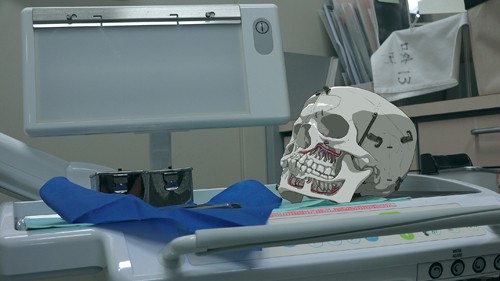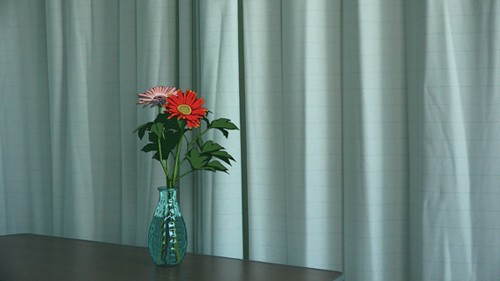(This is the second of a three-part email interview with Masaharu Sato conducted by Masami Tsubouchi, curator of the current exhibition at the Hara Museum. Click here to Email interview Part. 2)
An Encounter with a Book that Turned My Eyes to the Mundane
Masaharu Sato: It’s hard to talk about a work that’s just been finished. If you ask why I chose Tokyo to do my tracing, why I sought to record the most mundane of scenes, some reasons do come to mind, but to get at the reasons that lie deep within my psyche will take a lot more time than I have for an email answer. The more I try to find a good answer, the more I get only banal ideas, which made me realize how close to impossible it is to explore my own unconscious. Perhaps I can try a slightly different approach by re-visiting the time my attention turned to the mundane.
When I was 20, I became acquainted with the work of Werner Herzog, the German film director. At the time, Herzog was a complete departure from the somewhat stylish films of that other famous German director Wim Wenders. Herzog’s austere style made his films very different from an entertainment movie. I became enamored of his imagery and the strange sense of time he conveys in every one of his films. Wanting to read something written about his movies, I searched through bookstores, but came across only one book. This was Of Walking In Ice, a diary written by Herzog himself.
In the diary, Herzog wrote about how, upon hearing that his mentor Lotte Eisner was ill and dying, he decided to travel 700 kilometers on foot from Munich to Paris in the dead of winter to see her. Another person might have taken a train or plane, but Herzog goes on foot, believing that by walking, it would help her survive.
Like a martyr, Herzog steadily made his way on the frigid country roads alone, taking shelter in vacant houses when tired, then continuing on. Three weeks later, he reached Lotte. Having no camera, Herzog kept a written record of the events and dreams that he experienced during his odyssey.
Things That Become Visible Under Extreme Conditions/ Overcoming Cancer
“No one was there to harvest the apples. They lay fallen on the muddy ground, half rotted. From a distance I saw a tree to which one leaf appeared to be attached. Upon closer inspection, I saw that the tree, strangely enough, still had all of its apples. Not a single one had fallen. On that wet tree, no leaf remained. Only wet apples that refused to drop.”*
Herzog struggled with the most extreme of conditions: hunger, lack of sleep, cold, painful feet, loneliness, as well as doubts as to whether his was a meaningless act. Placed in the middle of this extreme situation, Herzog brought to his observations an intensity that probably would not have existed under ordinary circumstances.
Herzog does the same thing in his movies. As in the diary, he creates extreme situations from which he derives reality. I would never be able to copy Herzog’s actions, but I was visited with an extreme situation during the making of Tokyo Trace. This came in the form of news that the cancer I had been cured of had relapsed and that I would need immediate surgery. The surgery succeeded and there was no metastasis, but during my hospitalization, I was bedridden with pain and fever because my entire upper jaw had been enucleated. While in this miserable state, my wife brought me gerbera flowers and placed them on the table in my hospital room.
It was then that I was finally able to see the wet apples that Herzog saw.


Tokyo Trace, 2015 – 2016 12-channel video
*From Of Walking in Ice: Munich – Paris 23 November – 14 December 1974, published in German in 1978.
